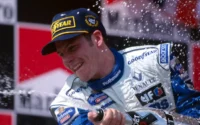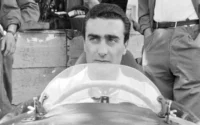Virgin Racing, later known as Marussia Virgin Racing, embarked on its Formula One journey with a vision to challenge the status quo through innovative marketing and a lean operating budget. Founded with the support of Richard Branson’s Virgin Group and operated by Manor Motorsport, the team made its debut in the 2010 season with a British license, switching to a Russian license in 2011 as part of its rebranding to Marussia Virgin Racing. Despite its ambitions, Virgin Racing struggled to find a competitive pace, concluding its two seasons without scoring any championship points.
Notable Team Members and Drivers
Timo Glock: Served as the team’s lead driver, bringing experience from his previous drive with Toyota.
Lucas di Grassi: Partnered with Glock in the 2010 season as a regular from the GP2 Series.
Jérôme d’Ambrosio: Replaced di Grassi for the 2011 season, having previously driven in Friday practice sessions for the team in 2010.
In 2010, Virgin Racing introduced Timo Glock and Lucas di Grassi as their driver lineup, with Glock being a former Toyota driver and di Grassi bringing significant GP2 experience. The team opted for a novel approach by relying exclusively on Computational Fluid Dynamics (CFD) for the design and development of their car, forgoing the traditional use of wind tunnel testing. This decision, spearheaded by technical director Nick Wirth, reflected the team’s commitment to technological innovation and cost-savings. The VR-01, Virgin Racing’s first car, demonstrated potential but was hampered by reliability issues and a critical design flaw with the capacity of its fuel tank.
Virgin Racing’s ethos, as described by Sir Richard Branson, centred on demonstrating that success could be achieved through engineering, a dedicated team, and a strong connection with fans, even on a budget significantly lower than its competitors. The team’s ambition extended beyond the track, with plans to establish a driver academy to nurture talent from the GP3 Series up to Formula 1. However, despite their efforts and the occasional glimpse of promise, such as Glock’s qualifying performance at the 2010 Australian Grand Prix, the team faced an uphill battle.
Virgin Racing F1 Legacy
Virgin Racing exited Formula 1 as it transitioned into Marussia Virgin Racing at the end of 2011. This change came about after Marussia Motors, a sports car manufacturer, acquired a controlling stake in the team, leading to a rebranding that reflected the new ownership. The team continued to operate under the Marussia name in subsequent seasons. It was eventually taken over by the Manor Motorsport group, leading to the Manor Marussia F1 Team for the 2015 season. However, despite a valiant effort to remain in the sport, including the introduction of Mercedes engines in 2016 and the recruitment of promising talents like Pascal Wehrlein and Esteban Ocon, Manor Racing was unable to secure the necessary funding to continue, leading to its final closure in early 2017.
Virgin Racing Formula One World Championship Records
| First entry | 2010 Bahrain Grand Prix |
|---|---|
| Races entered | 38 |
| Constructors’ Championships | 0 |
| Drivers’ Championships | 0 |
| Race victories | 0 |
| Podiums | 0 |
| Points | 2 |
| Pole positions | 0 |
| Fastest laps | 0 |
| Final entry | 2011 Brazilian Grand Prix |
Virgin Racing Constructors’ Championship Results
| Year | Name | Car | Drivers | Points | WCC |
|---|---|---|---|---|---|
| 2010 | Virgin Racing | VR-01 | Timo Glock Lucas di Grassi | 0 | 12th |
| 2011 | Marussia Virgin Racing | MVR-02 | Timo Glock Jérôme d’Ambrosio | 0 | 12th |

